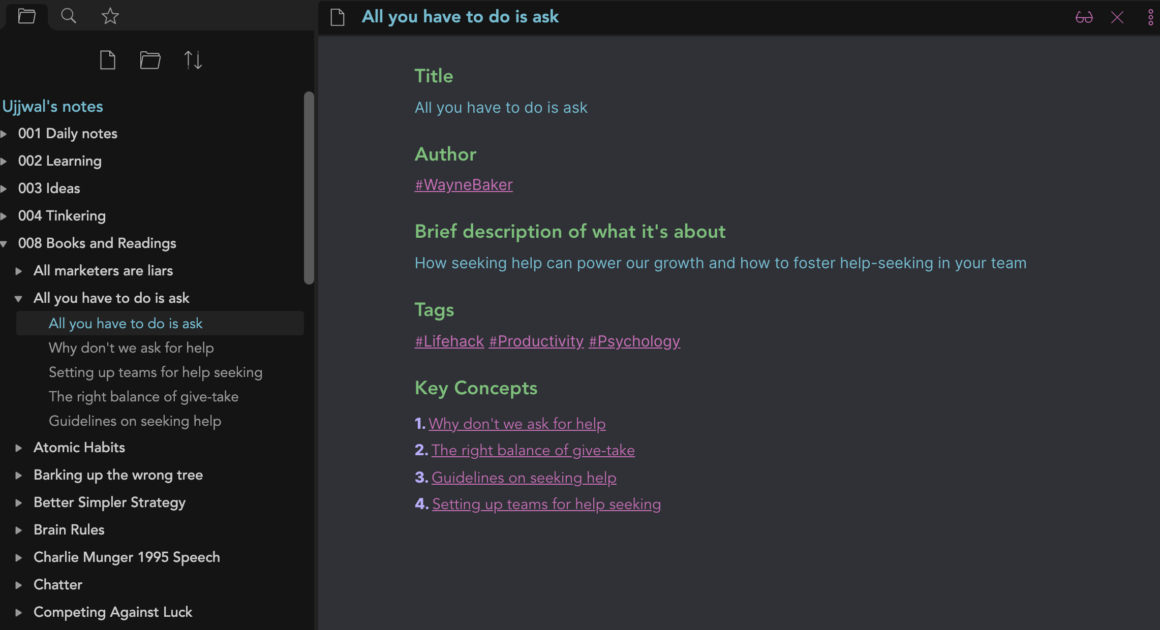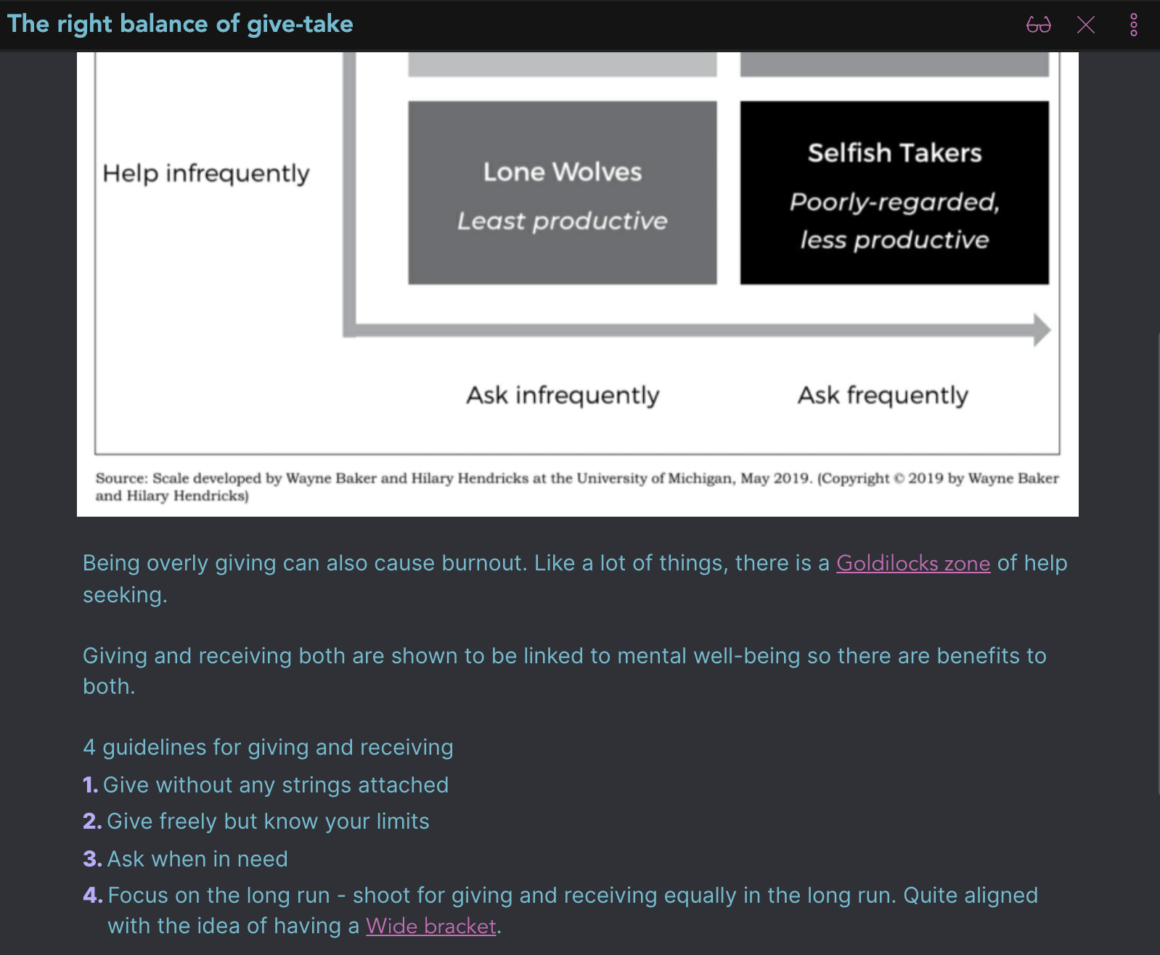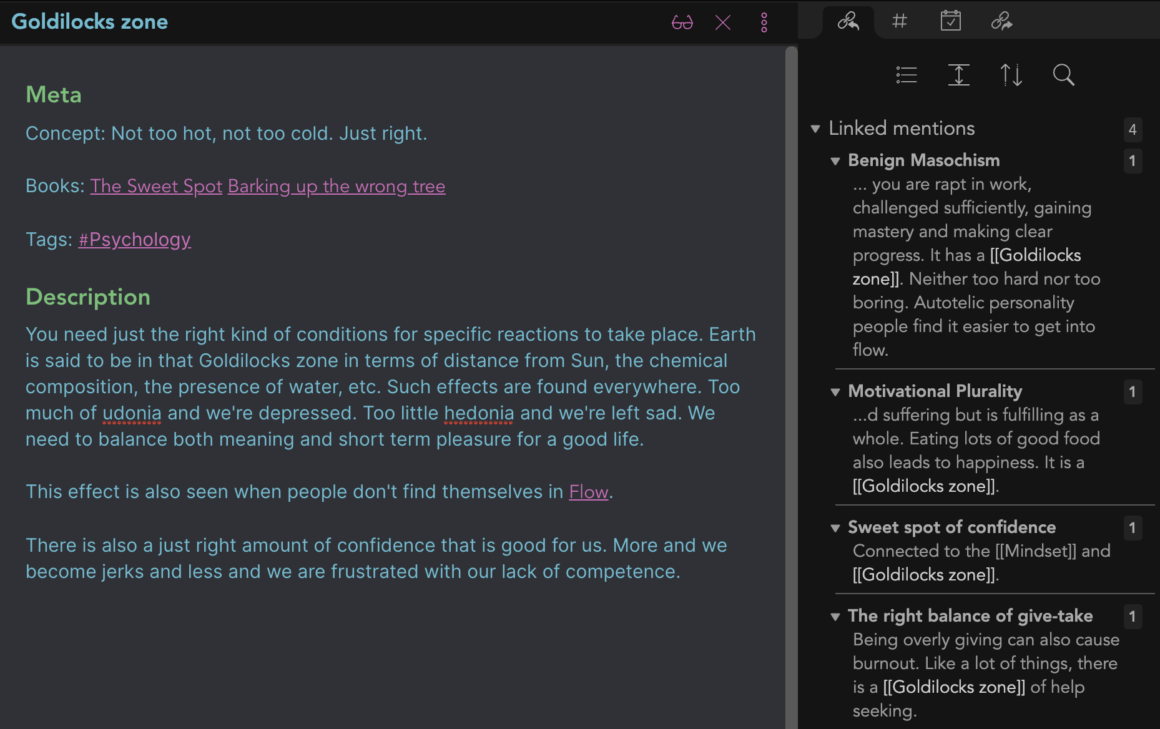In Early 2021, I migrated from Emacs org-mode to Obsidian for my note keeping. Obsidian is a basically just a folder of notes on your phone or desktop. Your notes are by default private and on your device only (you can choose a bunch of methods to have them on the cloud too if you want). These files are written in markdown which is basically just plain text. The most important advantage is that your notes are organised as a wiki so you can link them together like wikipedia.

Why a wiki?
Our brain retains a piece of information better when it is connected to other things. I wrote about how attention works before but it is also how retention works. It is in our best interest to try to understand things in relation to other stuff we already know. Linking your notes together like a wiki is a great way to support our natural learning instincts. In a way, this is also a forcing function to try and synthesise the information to make it connect to something while you’re discovering it. The more you connect a new idea, the more deeply we understand it and the more likely we are to apply it in real world.
How to take book notes in Obsidian
Before diving in to how to take notes in Obsidian, I guess it makes sense to establish that there is a bad (think: less useful) way to take notes. It is to simply put down a piece of information or a quote and hoping that’s that. That may be better than not taking a note altogether, but not by much. The more useful way is to write down your understanding of a quote or information in words that give you meaning.
Next, try to connect it to something you already know. It may be another topic or concept or another source/book/article. If that is not immediately possible, simply tag it with a word or phrase that pops up in your head. You can later on, follow the tag a down to see if you find something that connects to your original note. This type of connective thinking is at the root of the usefulness of systems like Obsidian or Roam research.
Another important part of our learning infrastructure, is the idea of “meaning before details”. We love when things come together in the form of a cohesive story. One way to implement this in taking book notes is to break down the overlapping idea of the book into its constituent concepts. The image below shows one way I’m implementing this.

The five elements of organising a book note
- A new folder for every new book to give it a sense of containment
- A meta note (the image above shows the book meta note) that describes the main idea
- The meta note is connected to individual notes, each describing the concept
- Tags so you can bind multiple works that have similar meaning to you (I also use the author as a tag so I can connect multiple works by the same author logically but this is not really important)
- Each individual concept note which is the core information we want to retain (think pieces of the soul of the book)
Connecting concepts across books
The decisive aim of note keeping, as I’ve said before, is to connect concepts. While writing your own understanding of a concept, see if it is connecting to something you’ve already noted before. In this specific example (see screenshot below) you can see the concept of “The right balance of give and take” being linked to other concepts. This cross linking makes for some really interesting synthesis. It allow you to not only retain the concept but the extra context, allows you expand your understanding of how it can be applied in the real world.

I should also mention that this a two way street. When you connect a note you’re working on, to another note, that other note also gains from this enrichment. This way if you come across that other note again, you can expand your understanding even further. See the screenshot below to see how a backlinked note from a different book, benefits from additional context from being connected to concepts across other books.

This method is by no stretch of imagination perfect. Like all things learning related, it is correlates strongly with how your brain is wired. Your mileage will most certainly vary but if you’re looking to start taking notes while reading, this might give you some food for thought.
In another Obsidian related post, I intend to describe how I use the popular Zettelkasten method to go about my planning my days and weeks.
I run a startup called Harmonize. We are hiring and if you’re looking for an exciting startup journey, please write to jobs@harmonizehq.com. Apart from this blog, I tweet about startup life and practical wisdom in books.